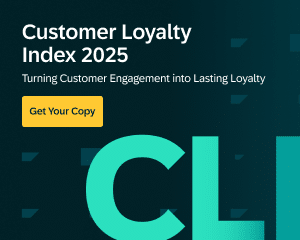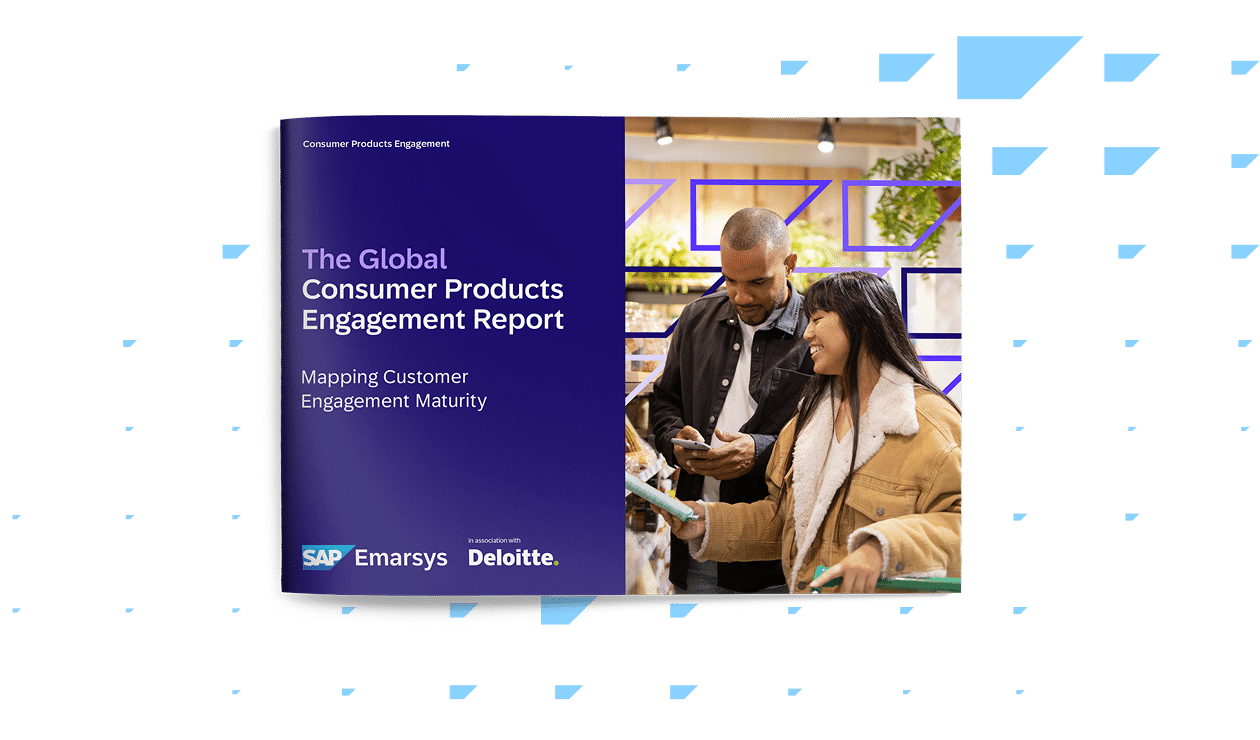Have you ever wondered why some brands seem to connect with customers effortlessly, while others struggle to hold their attention? The difference often comes down to how well they understand people. In a world where loyalty is fragile and choice is infinite, connection has become the true competitive edge.
Today’s consumer products marketers face a challenge that feels almost personal. Consumers want to be seen, recognized, and understood. Yet many brand experiences still feel generic, driven by promotions instead of empathy.
That’s where artificial intelligence changes everything. By helping marketers listen better, anticipate needs, and respond in real time, AI turns data into genuine connection. The result? Relevance at scale.
In this article, we’ll explore how AI is redefining consumer products marketing and how brands like Ferrara and John Frieda are using it to strengthen loyalty, drive growth, and build relationships that last.
1. The New Personalization Imperative
In consumer products, success still comes down to something deeply human: how well you understand people. When a shopper feels known, they repay that attention with trust. But when every email, ad, or coupon looks the same, they start to tune you out.
It’s easy to see why so many marketers fall into that trap. consumer products brands deal with millions of customers, dozens of SKUs, and endless data streams. The instinct is to simplify, to broadcast one message that fits all. Yet as Dale Carnegie would say, “The sweetest sound to anyone’s ears is their own name.” Recognition matters. And in consumer products, recognition at scale is what AI finally makes possible.
In a nutshell:
Price and promotions will always play a role, but they’re not what earn long-term loyalty. AI brings every data point together — from purchase frequency to product preferences — and interprets them in real time. That means your next message can feel timely and relevant to each person, whether it’s a replenishment reminder for shampoo, a recipe suggestion for a pantry staple, or a loyalty reward tied to favorite flavors.
Brand spotlight: Ferrara 🍬
Ferrara unified consumer, retail, and engagement data in SAP Emarsys to create a single customer view, then activated AI to scale relevance without scaling headcount. The team used predictive segments to find likely responders, send time optimization to improve inbox placement, and automated journeys to react to behavior across channels. Creative testing moved faster because AI generated and ranked variations, while suppression logic reduced fatigue and protected deliverability.
- 59% more contactable customers
- 300% growth in the Trolli fan base
- Email engagement 10 to 20% above industry averages
The bigger win was cultural: marketers spent more time on message strategy and less time on manual lists, which increased output quality and speed.
Takeaway: Relevance beats discounts every time, and AI is how consumer products brands can make every shopper feel like more than a data point.
2. Moving at Market Speed with AI Content
Trends in consumer goods move at the speed of a TikTok scroll. New flavors, viral routines, and lifestyle shifts can transform demand overnight. For consumer products marketers, that means campaigns must evolve just as fast, without sacrificing quality or consistency.
Every marketer knows the frustration of spotting a trend, briefing a team, and realizing the moment has passed before the campaign is live. It’s not from lack of creativity; it’s because traditional processes move slower than your customers do. That’s where AI becomes a trusted partner rather than a passing fad.
In a nutshell:
AI gives consumer products teams the agility to act while the opportunity is still hot. Generative tools can create copy variations, headlines, and product descriptions in minutes instead of days. Testing that once took a week can now happen overnight. You can see what works, refine the message, and double down, all before your competitors have their first draft approved.
The real magic isn’t just how fast you can move, but how quickly you can learn, and apply those learnings. AI absorbs information from engagement patterns, fine-tuning future content automatically. Instead of guessing what tone or image will resonate, you’re guided by real-time insight from your audience.
Brand spotlight: Ferrara 🍬
Ferrara embraced this mindset through SAP Emarsys, using AI-assisted testing to continually refine its campaigns. Subject lines, imagery, and offers were evaluated in real time, allowing the team to pivot within hours instead of weeks. This constant learning loop meant higher engagement and fresher creative without overloading internal teams.
Takeaway: The brands that connect fastest win most often, and AI gives consumer products marketers the speed, insight, and creative flexibility to keep every campaign in tune with what customers want right now.
3. Predictive AI Turns Uncertainty into Advantage
Consumer behavior in the consumer products world can shift overnight. A viral trend, a new diet movement, or even a single influencer post can reshape demand before your next campaign launches. For marketers, that unpredictability has always been the hardest part — you’re expected to plan for the future without knowing what tomorrow will bring.
This is where predictive AI changes the game. Instead of reacting to what already happened, you can anticipate what comes next.
In a nutshell:
Predictive AI looks at signals hidden in your data, like what customers are browsing, how often they buy, when they drop off, and turns them into actionable insight. It might spot that a loyal customer is about to switch brands, or that a seasonal spike in demand is forming earlier than usual. With those insights, you can act before the opportunity passes: trigger a loyalty reward, adjust inventory, or launch a tailored campaign to the right audience at the right time.
Brand spotlight: John Frieda 💇♀️
When John Frieda launched its ULTRAfiller+ line, the team used SAP Emarsys with predictive insights to identify exactly who was most likely to buy and when to reach them. The results were immediate: a 4.2× higher conversion rate, 4× more contacts reached, and an 88% repeat purchase rate from customers who tried the product.
Takeaway: Prediction isn’t about guessing the future – it’s about recognizing patterns in the present and acting on them before everyone else does. For consumer products brands, AI makes that listening process precise, actionable, and faster than human instinct alone could ever be.
4. Beyond Discounts: Building Loyalty That Lasts
For years, consumer products brands have relied on discounts to drive sales. They boost short-term volume but often come at the expense of long-term loyalty. Consumers have grown used to promotions and now expect every product to be on offer. In fact, 57% of shoppers have already switched to own-label alternatives because they’re more affordable.
Price still matters, but what really shapes loyalty today is relevance. Consumers are far more likely to respond to offers that feel personal, not generic. According to the Global Consumer Products Engagement Report, 41% of consumers want brands to give them personalized deals and offers, while only a small fraction want mass discounts that don’t reflect their needs.
In a nutshell:
The difference between a discount and a reward lies in data. When your customer data is unified, AI can recognize what each shopper values — the product they restock every month, the flavor they prefer, or the reward they’re most likely to redeem. That insight helps you deliver incentives that feel thoughtful instead of transactional.
High-maturity brands with connected data see the payoff clearly. The report shows a 90% retention rate among these brands, compared with 81% for those still relying on disconnected systems. When data and AI work together, every promotion becomes a moment of recognition that strengthens loyalty instead of eroding margin.
Example in action:
Ferrara used SAP Emarsys to shift from blanket discounts to data-driven relevance. Each campaign reflected what customers actually wanted, not what the brand hoped would sell. That change strengthened retention, lifted engagement, and protected margins, proof that loyalty built on understanding lasts longer than loyalty bought through price.
Takeaway: True loyalty is earned through relevance and respect. AI helps consumer products brands deliver both, at scale and with impact.
5. Simplifying Complexity with AI and Automation
Consumer products marketing is rarely simple. Multiple brands, regional teams, and product lines create layers of coordination that slow everything down. Campaigns take weeks to align, data lives in silos, and opportunities slip by while teams are still reviewing spreadsheets. The result is a lot of effort spent managing systems instead of connecting with customers.
AI and automation change that dynamic. They handle the repetitive, data-heavy work that used to eat up hours of a marketer’s day. Segmentation, send-time optimization, and product recommendations can all run automatically in the background. This frees your team to focus on strategy, creativity, and customer understanding.
In a nutshell:
AI helps unify data across systems so everyone works from a single customer view. It spots opportunities faster than manual reporting ever could and flags risks before they become problems. When your tools are connected and your data is clear, you can act with confidence instead of waiting for reports to catch up.
Takeaway: AI simplifies complexity. It brings structure to chaos and speed to decision-making, allowing consumer products marketers to operate with the agility of a startup while keeping the strength of a global brand.
Conclusion: A Smarter Era for consumer products Marketing
The most successful consumer products brands aren’t the ones shouting loudest. They’re the ones listening closely. They use data to understand what customers care about, automation to act quickly, and AI to make every interaction feel personal.
The message is clear. Growth in consumer products now depends on how well you can connect, predict, and personalize at scale. With SAP Emarsys, brands like Ferrara and John Frieda are already proving what’s possible.








